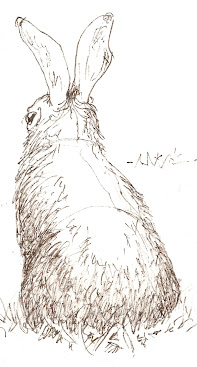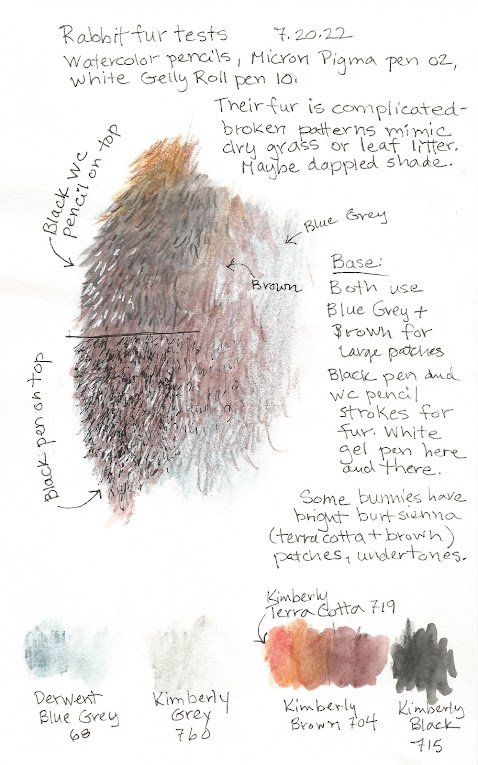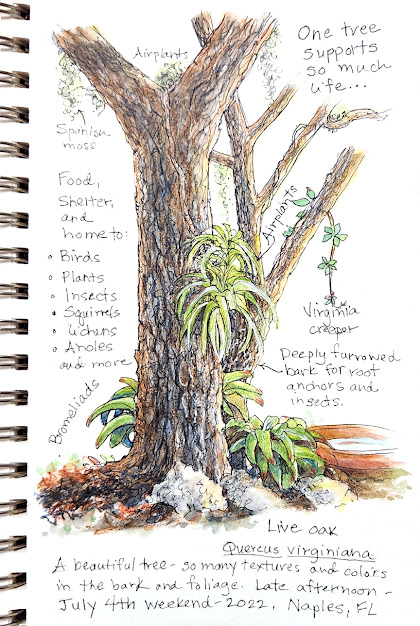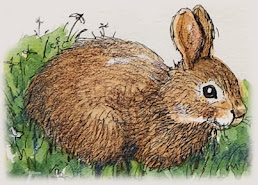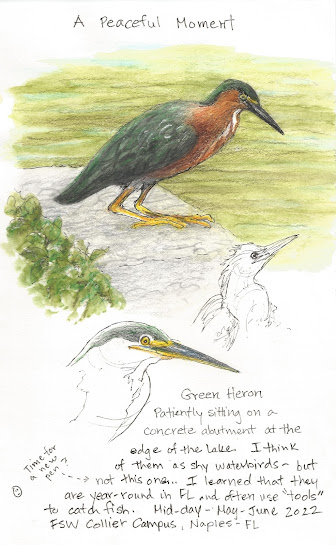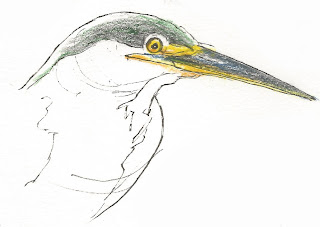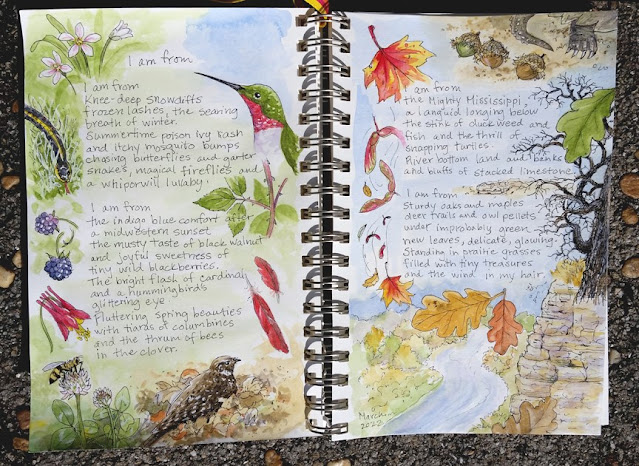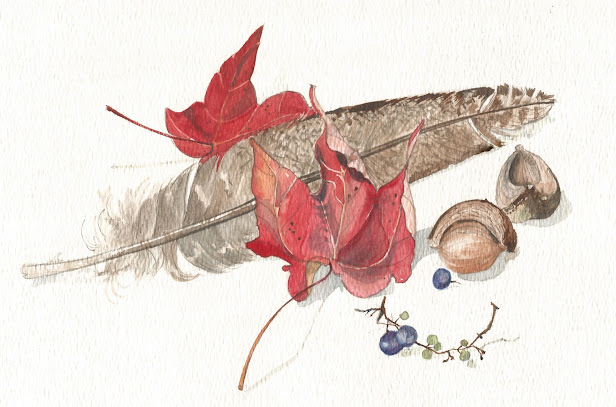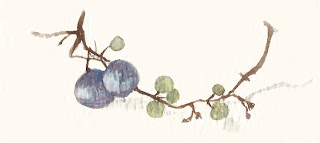 |
|
New and old Live Oak leaves in late spring. |
It all started with oaks.
Some time ago, I sketched a favorite tree and wrote about oaks as akeystone species, and why fallen leaves are important to their habitat. I’m much more aware of leaf cycles now. In my neighborhood and beyond, live oaks dropped
their tired leaves this spring and new leaves emerged, bright and sassy. As we move into summer they’re turning a
darker, more sedate color. Deciding on
the actual color of live oak leaves is a challenge for me – as a whole, tree
foliage seems to be a muted dark olive at times; other times there is a hint of
blue in the green. Up close they
vary. Besides enjoying the puzzle of how
to accurately sketch leaf colors, I’m looking at fallen leaves and all the bits
and pieces that make up the leaf litter under trees.
Treasures under the oak tree.
I’ve been reading learning about the value of fallen leaves
to ecosystems in general and realize this is an invisible chunk of the natural
world I often overlook. Yes, I know that
leaf litter is important, but until I started to educate myself more deeply, I didn’t
realize how vital it is to the health of food chains. In practice, I let fallen leaves lie (in most
places) most of the time, unless they pose a fire risk. But now this industrious hidden world kindles
my curiosity and wonder. Imagine! An entire food web depends on the untidy clutter
of nature’s litter.
Natural litter (as opposed to human litter) is
organic material such as dead leaves, twigs, branches, seedheads, husks,
berries, and grasses. We can find leaf
litter on the forest floor, in streams, rivers, and bays, and under our
cultivated trees and shrubs (if not raked away). In my backyard
litter, I’ve seen earthworms, mushrooms, spiders, beetles, millipedes, cicadas,
snails, ants, caterpillars, anoles, centipedes, toads, grubs, crabs, and small
snakes, not to mention MANY unidentified insects. Fungi loves leaf litter too – mushrooms, puff
balls, and bracket fungi often make their home there.
Leaf (needle?) litter under the slash pines. Pine needles are actually modified leaves.
Besides sheltering many species, this leaf layer conserves
moisture and protects the soil below. Vulnerable
creatures can find a home or a hiding place from predators. Some moths make cocoons that mimic the same dried
leaves they nestle into for their change from caterpillar to moth. A small snake or anole can quickly and easily
vanish into the leaves or brush piles.
Litter hangs around a while, decomposing slowly through the action of
weathering and digestion. Temperature
and humidity affect the decaying process, and all sorts of living things feed
on (and excrete) the nutrients locked inside.
Living in the leaf layer are small consumers that also de-construct
– they help break apart larger bits such as leaves, twigs, branches, and
berries. A wide variety of worms and
insects make their homes in the earth below, some for their entire lifespan. Cicadas spend years underground before
emerging to mate. Underground dwellers
aerate the soil as they burrow and leave their waste for others to feed
on. Bacteria and underground fungi
further decompose the smaller bits into nutrients that feed the plants and
trees that initially produced them.
These tiny life forms are part of the base of our food
webs. Dr. Doug Tallamy, author,
entomologist, and conservationist, reminds us that "All animals get
their energy directly from plants or by eating something that has already eaten
a plant. The group of animals most
responsible for passing energy from plants to the animals that can’t eat plants
is insects.”
For example, birds forage for insects and worms and other
edibles among decaying leaves. For many
birds, this is their primary source of food.
Just think of the larger life forms that depend on birds for their diet
and so on up the food chain – and it all starts with plants and their litter.
We have a lot of thanks to give to the many thousands of (or
more) insects and other invertebrates that make their homes in the ground and
the decomposing layer of litter covering it.
Every minute, they’re busy tidying up and transforming raw material into
usable energy. It may have been the oaks
that started it, but there are so many more species contributing their own
litter. I’m more careful now about
raking away the leaves, pine needles, twigs and such, and find myself checking under
every tree and bush for a glimpse of that mysterious underground universe.
For more exploration:
University of FL/IFAS blog, an interesting read on the value
of leaf litter in Florida:
https://blogs.ifas.ufl.edu/wakullaco/2015/01/17/leaf-litter/
“Life in the Leaf Litter” from the American Museum of
Natural History, a downloadable PDF booklet with engaging text and
illustrations:
https://www.amnh.org/content/download/35188/518925/file/LifeInTheLeafLitter.pdf
Things that go squirm in the night... a 3 minute video from
ChooseNatives.org:
https://www.youtube.com/watch?v=VKFzilm3Rwk
Slash pine litter coloring page: download a PDF.
Media
Aquabee sketchbook, 6x9”
.7 mm mechanical pencil
Pitt Pen, Sepia F and Micron Pigma, black 01
Mondeluz watercolor pencils
Niji waterbrush, Medium




